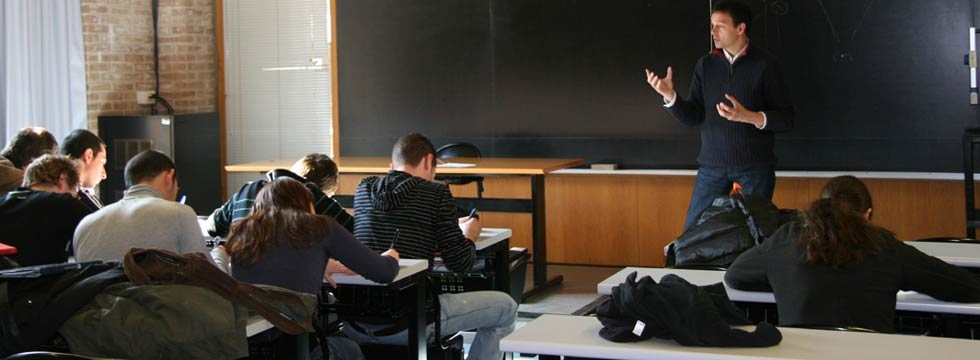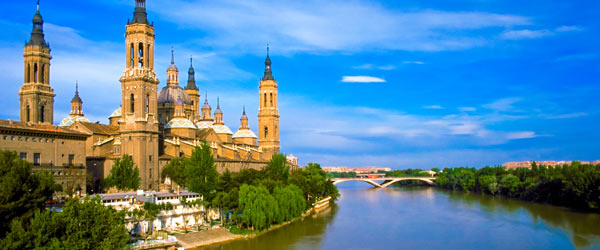Zaragoza in two days
Zaragoza is a monumental city whose streets bear the marks of the passage of four civilizations: Roman, Muslim, Jewish and Christian. Two days are time enough to visit many of the historic places which have been preserved to the present day, but we'll also have a chance to see the new Zaragoza: a modern city with excellent infrastructures which played host to the 2008 Zaragoza International Exhibition.
Day 1: The Basilica and the Seo
A good time to start our visit to Zaragoza is around 10:30 am. First we're going to visit the historic centre, so we make for the vast Plaza del Pilar square. It's well worth taking a few photos here, with the majestic Basilica of El Pilar, the Lonja building and the Town Hall along one side, the Cathedral of La Seo at the end, and in front, the monument to Goya next to the Caesar Augusta Forum Museum.
We have to visit the Basilica and the Seo Cathedral at the very least. In the Basilica, tradition ordains that everyone must kiss the Virgin of El Pilar.
Also not to be missed are the domes, and a climb up to the tower to see the view all over the city. The best photos of the exterior can be taken from the Puente de Piedra bridge. In La Seo, it is well worth visiting the interesting Tapestry Museum as well as the interior of the Cathedral.
If we have time during the morning, a visit to the Magdalena church (behind La Seo) and the Caesar Augusta Forum Museum is also recommended, for a glimpse of what the city was like during the Roman Empire.
Lunch in the historic centre
After a short walk, this is the ideal time to have lunch, and there are numerous restaurants in the area near the square, the Calle Mayor and the Calle del Coso.
We can choose either a normal meal, where we can sample typical dishes such as borrajas, typical fried breadcrumbs or lamb, with local fruit from Aragon for dessert; or else we can opt for the Spanish custom of "going for tapas" in a classic tapas city like Zaragoza. If we try the tapas around the Plaza de Santa María square or the streets of Verónica, Romea, Coso or Antonio Agustín, we'll soon discover why the natives are such fervent devotees of this custom.
An afternoon of culture and local colour
Strolling through the historic centre of Zaragoza will remind us we're in a large city where the streets are always full of people. After lunch is a good time to visit the Caesar Augusta Theatre Museum, which also has access to the remains of the old Roman theatre.
We continue our visit along the Paseo de la Independencia avenue where there are numerous shops where we can buy some souvenirs of the city. A little further along the avenue we come to the Courtyard of the Infanta's Palace, where in addition to its architecture, we can also see some important works by Goya.
If we return to the historic centre along Avenida César Augusto, we'll find ourselves in the perfect spot for having a rest and some mid-afternoon refreshment in a café or on a terrace while we enjoy the lively atmosphere in the streets.
Tapas evening in the Tubo neighbourhood
After a whole day spent visiting Zaragoza, the best thing we can do to restore our strength is to visit a few of the bars in the Tubo neighbourhood. This is an area of small alleyways packed with bars and restaurants, where the usual custom is to go from one to another sampling the speciality of each place, accompanied by a glass of wine or beer.
If we want to discover the city's nightlife, we can choose between the younger atmosphere to be found around the Central Market,in the Historic Centre; the more elegant venues in the area around the streets of Francisco de Vitoria, San Vicente Mártir or Cesáreo Alierta; or, if the weather is good, the outdoor terraces in the Plaza San Pedro Nolasco or Santa Cruz.
Things to remember
You can book guided tours of the city at the tourist office.
The tourist bus is an excellent option for getting around the main attractions.
The Zaragoza Tourist Card which you can buy online and at tourist offices can be used on public transport, as well as offering discounts in museums, shops and restaurants.
Zaragoza is a very flat city, so touring it by bike is another pleasant option. Find out where you can hire a bike at the tourist office.
Day 2: From the Arab world to the Zaragoza Expo
Our second day in Zaragoza will reveal how different the city can be for each visitor. In the morning, we'll visit the Aljafería.
At first glance we might think that nothing could be more distant from the Arab world than this military fortress. However, once inside, we find a mosque, a courtyard with orange trees and architecture which is clearly determined by its Muslim origins.
In the afternoon, we'll visit the site of Expo Zaragoza 2008. As we approach we see the Water Tower on the other side of the Ebro River. To get to the other side we need to cross the Millennium Bridge, and from here we can see the beautiful Bridge Pavilion, shaped like a giant gladiolus.
We can also travel to the rivers in any part of the world with a visit to the Aquarium in the Expo grounds. This is one of the largest freshwater aquariums in the world, and once inside, time will simply fly by. Next to the Aquarium we can see the pavilions of Spain and Aragon in Expo Zaragoza, which are still standing.
After our visit to the Aquarium, there are various ways of spending the rest of the afternoon. We can either take a cable car over the Expo grounds to see a panoramic view over the city, or else visit the Luis Buñuel Water Park. Here we'll find attractions like a river beach, a trip up the river by boat or by kayak and a white-water canal where we can try our hand at rafting. Although if we prefer to take our leave of Zaragoza with a more urban image of the city, we can also spend our last hours making the most of its historic centre and the surrounding area.
Things to remember
The guided tour of the Aljafería is only available in Spanish (except in July and August, when it is also available in English and French).
It lasts approximately one hour, but does not include the exhibitions, which can be seen after the guided visit.
The Aljafería has audioguides in German, French, Spanish, English and Italian.







